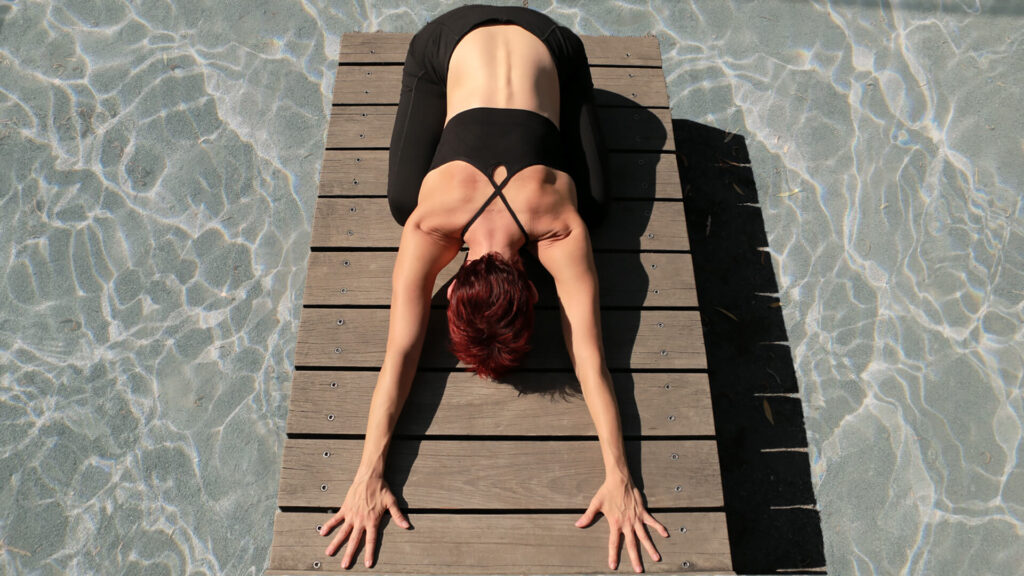
You probably already know Child’s Pose—it’s one of the most recognized and accessible postures in yoga. But there’s more to this seemingly simple pose than meets the eye. 💡
Child’s Pose (Balasana) is more than just a break—it’s one of the three official resting poses in yoga. Whether you’re brand new to yoga or a seasoned mover, you can return to this pose anytime during your practice to ground yourself, calm your nervous system, and reconnect to your breath.
Use it to begin your session with intention, take a pause when things get intense, or close your practice with gentle surrender. It’s your safe space—on and off the mat.
✨ What is Child’s Pose good for?
- Gently stretches your hips, thighs, and ankles
- Lengthens and relaxes the spine
- Soothes your mind and relieves stress
- Helps regulate breath and supports deep relaxation
- Great for beginners and advanced yogis alike
🧘♀️ How to Get Into Child’s Pose
- Start in a kneeling position, sitting back on your heels with your big toes touching.
- Decide if your knees stay together or open wide to the edges of the mat—choose what feels better in your body.
Tip: If you’re pregnant or want more space, widen the knees to make room for your belly.
- On an exhale, fold forward from the hips, bringing your forehead toward the mat.
If your forehead doesn’t quite reach the mat, slide a block or cushion underneath for support.
- Choose your arm variation:
- Arms alongside your body, palms facing up → deep inward focus, releasing the shoulders.
- Arms stretched forward, palms down → lengthens the spine and helps you feel grounded.
- Palms up in front → a subtle shift to receiving energy.
- Soften your breath and surrender the weight of your body to gravity.
🛠️ Modifications and Props
Child’s Pose is accessible, but that doesn’t mean it’s one-size-fits-all. Try these adjustments for more comfort:
- Tender knees? Place a folded blanket under the knees or between the thighs and calves for extra cushioning.
- Can’t sit back onto your heels? Place a rolled-up blanket or a yoga block between your sit bones and heels.
- Need a softer landing? Rest your torso on a bolster or stack of blankets.
Remember, this is your pose. Make it feel good.
⏱️ How Long Should You Stay?
You can stay in Child’s Pose for 30 seconds or several minutes—whatever your body and breath need. The longer you stay, the more your nervous system gets the message: “You’re safe. You can relax.”
It’s also a great opportunity to bring awareness to your breath. Try this simple technique:
- Inhale for 4 counts,
- Exhale for 6 counts,
- Or explore a gentle 3-Part Breath (Dirga Pranayama) to deepen the experience.

💪 Want to Make It a Bit More Active?
While Child’s Pose is typically restful, you can give it a little boost:
- Tuck your toes under to stretch the soles of your feet—an area we often forget but definitely need to mobilize.
- Hover your arms a few inches off the ground to engage your shoulders and core gently, adding a subtle dynamic element.
Final Thoughts
Child’s Pose is more than a place to rest. It’s a pose of humility, surrender, and deep listening. It gives you permission to pause, reset, and connect with yourself—no matter where you are in your practice.
Use it as often as you need. No judgment. Just breath, presence, and grounding.
👉 Ready to move from rest into strength?
Downward Facing Dog is the perfect next step—wake up your entire body, stretch it out, and feel energized. Learn to master > Downward Facing Dog.


































